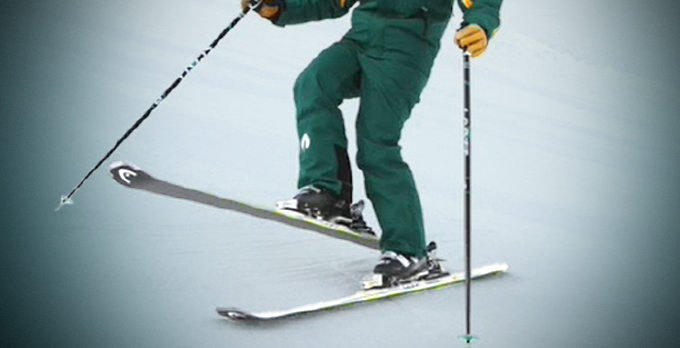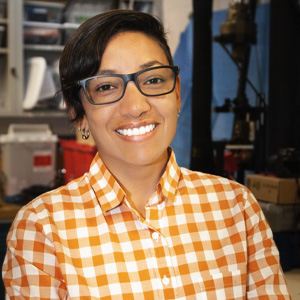The University of New Mexico Health System Expands Critical Services to Roswell, NM

UNM Researchers Create New Way to Test Ski Boot Bindings in a Lab
Can you test ski equipment that claims to prevent serious injury, by recreating that very injury in a lab? That’s what a team of researchers at The University of New Mexico Health and Health Sciences is trying to figure out.
Fresh powder on the slopes means ski season for some, but it’s ACL season for Dustin Richter, MD. As an associate professor in Sports Medicine at the UNM School of Medicine, he is an expert on these types of injuries.
“We see lots of soccer players and football players, who unfortunately have these devastating injuries,” Richter said. “Then, we get a little break until January, February, March, and with all the snow sports, especially skiing, we start seeing it again. It's one of the most common injuries that we treat.”
Some ski equipment on the market today claims to prevent ACL injuries, specifically bindings.
“But it has only been shown in a model that's done on a computer,” Richter said. “It's never actually been tested in people or on cadaveric specimens.”
Until now. Christina Salas, PhD, a biomedical engineer and associate professor in the UNM School of Medicine’s Department of Orthopaedics, is putting three common types of ski bindings to the test at the UNM Center of Excellence for Orthopaedic Surgery & Rehabilitation (COE) in Rio Rancho.
Instead of a computer model, her team is using a hand-built machine, cadaver limbs, and real ski equipment to see if it actually delivers on what it is designed and advertised to do.

We are not the physicians that are in the operating room treating the patients, but as engineers who work with these clinicians, we're helping them to either develop a new surgical procedure or a new device, or identify a new mechanism of injury that can inform their clinical practice.
Study in a Nutshell: Determine whether ski bindings can actually prevent an ACL injury
Goal 1: Figure out how to test. Using a machine in the lab, attempt to recreate the series of activities that happen, all within a split second, when someone is downhill skiing that cause injury to the ACL.
Goal 2: Test cadaver limbs to learn how much force causes the ACL to rupture.
Goal 3: Test three different ski bindings to see if they release a ski boot before the ACL on a cadaver limb ruptures.
Watch the science in action below
Salas said her team is still in phase one of the research.
“No one really has a clear idea as to whether the injury is happening the way people theorize it's happening. So, we're trying to reproduce something that's all theoretical, and it is going to be hard for us,” she said. “Unfortunately, we don't have a robot to do this. So, we actually have to do all of this by implementing certain engineering design protocols.”
Top of the Slope
Building a machine to recreate a very specific type of injury can take years, but Salas’ team has made a lot of promising progress since the ski binding project began in 2019, thanks to two former UNM resident physicians who happen to be avid skiers. Chris Kurnik, MD and Benjamin Albertson, MD said they came up with the idea for the study while on a ski trip together.
“I've had multiple family members sustain ACL injuries while skiing,” Albertson said. “I treat a lot of ACL injuries in very young, healthy kids, and if there's something we can do to decrease the prevalence of this, it would be great.”
The pair enlisted the help of Salas and Richter.
“We were awarded a $25,000 grant that helped with the purchase of bindings, cadaveric specimens, and the overall study design for this,” Richter said.
From there, the team set up shop in the new lab spaces at the COE. The pandemic threw a wrench in the timeline, but they continued to make slow and steady progress over the next few years.
Kurnik and Albertson have since finished their medical residencies at UNM and started careers in other states, but they still closely follow the ski binding study.
“It's very common to have studies that are not truly finished before somebody graduates,” Kurnik said. “So, from that standpoint, it was more of a disappointment to not be able to complete more of the study early on.”
But with Salas and Richter still leading the project, Kurnik said he is excited to see what they discover.
“Knowing something cool is going to come from it, and we're going to reach the ultimate goal is all I care about,” he said.
Downhill Dash
Richter and Salas said results may finally be around the corner.
“My hope is that within the next six months, we have not only identified the mechanism of injury, but been able to test all the ski bindings,” Richter said. “So, by the end of June is my goal for this. Then, based on whether the gear they have right now meets the criteria that we hope, or if it needs to undergo redesign and work with some of the industry partners in skiing, that could be several years.”
Salas said no matter the outcome, her team’s work on injury prevention will continue.
“We are not the physicians that are in the operating room treating the patients, but as engineers that work with these clinicians, we're helping them to either develop a new surgical procedure or a new device, or identify a new mechanism of injury that can inform their clinical practice,” she said. “We have a huge impact on patient care, even without having that one-to-one patient interaction.
Salas hopes their findings not only impact New Mexicans, but communities worldwide who can also benefit from and build upon this research.
If you want to see more of the research in action, visit our UNM HSC Instagram page.